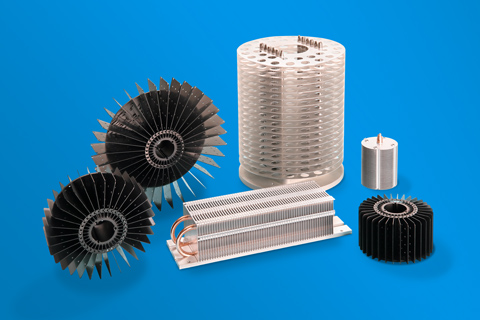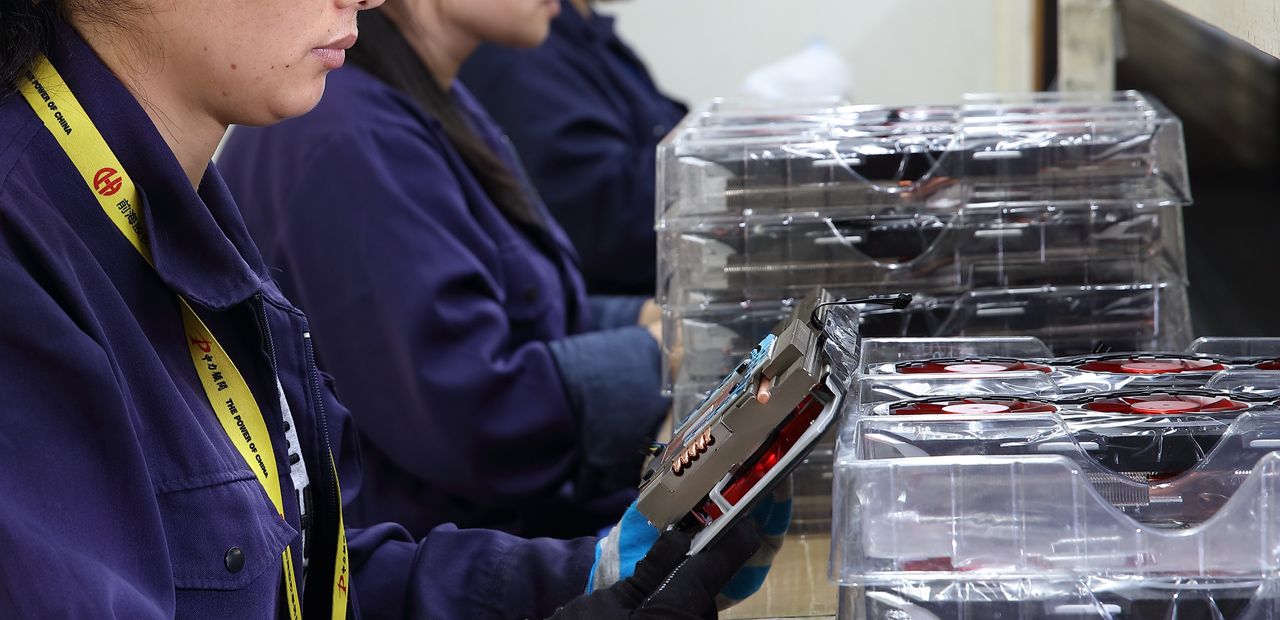Custom Heat Sink Design
There are many decision points in the custom design of heat sinks: the heating load from the heat source, the fin size and shape, the pressure drop across the heat sink, fan or pump selection, the thermal interface materials (TIMs) used, and the methods of fastening the heat sink to the heat source or thermal module.
Once these inputs are known, a new design can be created or an existing design can be validated using 3-D modeling techniques followed by prototypes and thermal testing. After these steps are carried out, the design can go into production.

Heat Sink Showcase
DESIGN INPUTS
The effectiveness of a heat sink’s heat dissipation ability depends greatly on the geometry of the heat sink and the amount of heat to be dissipated. The more surface area of the heat sink that is exposed to the cooling medium (often water or air for most applications), the higher the amount of heat the heat sink can dissipate. However, trying to add too much surface area in too small a space causes the pressure drop across the heat sink to rise, for both forced-air and liquid cooling applications. This, in turn, drives the fan or pump selection for these particular applications, as more powerful fans or pumps operating at high flow volumes are required for heat sinks with higher pressure drops and higher thermal loads.
The path the heat travels needs to have as little thermal resistance as possible to ensure that the heat moves quickly through the heat sink to be transferred to the cooling medium. This is done by using a thermal interface material (TIM) at the junction between the heat source and the heat sink. Also, heat pipes can be embedded in a heat sink’s base in order to facilitate the spread of heat through the heat sink. The structural considerations of the heat sink are also important, as the method of attachment of the heat sink to the heat source will vary based on what can be used in the space. For temporary or modular systems, a Z-clip attachment method and a thermal tape for a TIM may be best, as they are not as permanent as a thermal epoxy or soldered bond; however, the mechanical strength of a soldered bond and the exceptional thermal conductivity it offers makes it best for high-performance applications with long service life.

Thermal Image of Heat Sink
THERMAL TESTING AND PROTOTYPES
Once the design inputs are decided, a heat sink design is either created by Novark or supplied by the customer. This is done through both engineering drawings and CAD-generated 3D models. The 3D models are used to evaluate machining and manufacturing tolerances, and to program various CNC machines using the finalized models.
Once the design has its tolerances cleared for manufacture, a set of prototypes is constructed and tested for their thermal performance. These thermal tests are the final validation before readying the design for mass production, and can be carried out either at Novark’s facilities or at the customer’s desired testing facilities. If the thermal performance is not as desired, Novark will quickly and efficiently correct defects and refine the manufacturing process in order to create a final product that exceeds customer expectations.

